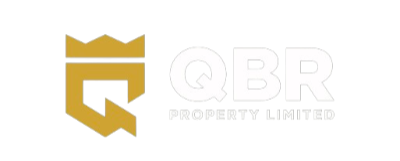geheime-falschgeld-quellen4025
geheime-falschgeld-quellen4025
14 Businesses Doing A Superb Job At Order Fakes Online
Ordering Fakes Online: A Comprehensive Guide
In the contemporary digital landscape, the fast increase of e-commerce has brought with it a myriad of options for consumers. While real items dominate the marketplace, a parallel underground economy has actually emerged where counterfeit items thrive. This short article intends to clarify the phenomenon of ordering fakes online, exploring its ramifications, dangers, and providing useful advice for customers wanting to navigate this dirty terrain.
Understanding Counterfeit Goods
Counterfeit items refer to products that are created to mimic authentic branded product, frequently with the intent to trick customers. These can range from luxury bags and designer clothes to electronic devices and pharmaceuticals. The appeal of counterfeit items frequently depends on their substantially lower rate tags compared to genuine items. Nevertheless, the allure of getting a “designer” purse for a portion of the cost comes with fundamental dangers.

Factors for Purchasing Counterfeit Items
While lots of consumers may be mindful of the ethical implications of buying counterfeit items, there are numerous factors that add to the ongoing market for fakes:
-
Affordability: Counterfeit products often cost substantially less than their genuine equivalents, making them accessible to a wider audience.
-
Status Symbol: Consumers might desire the social status that includes owning high-end brand names, leading them to buy fake items that mimic high-end products.
-
Absence of Awareness: Some purchasers might not recognize that the products they are purchasing are counterfeit, particularly when marketed stealthily.
-
Trend Chasing: Fashion cycles are incredibly quickly, and many consumers wish to keep up with patterns without the monetary burden. Counterfeits offer an option, albeit a dishonest one.
The Risks of Ordering Fakes Online
While the idea of scoring a deal on replicas might appear appealing, the decision to order counterfeit goods online includes numerous dangers:
-
Legal Consequences: Purchasing counterfeit goods is prohibited in lots of jurisdictions. Customers may deal with fines or legal actions.
-
Quality Issues: Counterfeit products typically include inferior materials and workmanship, resulting in bad resilience and dissatisfaction.
-
Fraud: Many websites selling counterfeit products are not legitimate, putting customers at risk for rip-offs where monetary details might be jeopardized.
-
Support for Organized Crime: The counterfeiting industry is typically linked to larger criminal enterprises, meaning that buying fakes indirectly supports these unlawful networks.
How to Identify Counterfeit Products
For customers who are still thinking about purchasing counterfeit items, it’s essential to acknowledge the indications of a fake item. Here’s a list to assist recognize counterfeit items:
-
Price Discrepancy: If the rate appears too great to be true, it likely is. Luxury products sold at substantial discounts need to raise warnings.
-
Poor Quality: Check for indications of bad workmanship, such as unequal stitching, misspellings on branding, or flimsy materials.
-
Absence of Documentation: Authentic items normally come with certificates of credibility, warranty cards, and suitable product packaging.
-
Suspicious Vendors: Research sellers completely. Check for consumer reviews and grievances or whether they have a legitimate company existence.
What To Do if You Receive a Fake Product
If a customer has actually bought what they thought to be a real item, just to find it’s a fake, there are several steps to follow:
-
Document the Purchase: Take screenshots of the listing, payment confirmation, and any correspondence with the seller.
-
Contact the Seller: Initiate a conversation with the seller to request a return or refund. Some might use to rectify the situation willingly.
-
Submit a Dispute: If the seller does not respond or refuses to cooperate, report the issue to your payment provider for a resolution.
-
Report the Seller: Notify appropriate authorities, such as consumer security companies or online markets, to assist safeguard other consumers.
Alternatives to Counterfeit Goods
For customers who are fascinated by the visual appeals of high-end products however do not wish to engage in unethical acquiring, there are some alternatives:
-
Second-hand Shopping: Sites like eBay, Poshmark, and ThredUp allow consumers to gain access to authentic branded products at lower prices.
-
Rental Services: For unique celebrations, think about products from rental services that provide genuine designer products for a fraction of the list price.
-
Budget-friendly Brands: Many cost effective brands offer similar styles without the significant price tag or ethical ramifications of counterfeits.
Frequently asked questions
Is it illegal to buy counterfeit products?
Yes, acquiring counterfeit items is unlawful in lots of jurisdictions, and it can result in legal ramifications for customers.
How can I tell if a product is counterfeit before I buy it?
Try to find signs such as cost discrepancies, bad quality in workmanship, missing out on documents, and examine seller trustworthiness through reviews and scores.
What should I do if I receive a counterfeit item?
Document your purchase, contact the seller for a return or Echtes Geld Kaufen refund, file a conflict with your payment provider, and report the seller to appropriate authorities.
Can I get in problem for unwittingly purchasing a counterfeit item?
While it’s less likely for a consumer to face legal penalties if they were uninformed the item was counterfeit, it is still suggested to be mindful and informed when buying items online.
Are there safe locations to purchase reproductions?
While it is not suggested to back reproductions, seeking pre-owned or classic retail alternatives can offer genuine items at lowered rates without turning to dishonest practices.
The appeal of purchasing fakes online is a prevalent concern, driven by a combination of desire for luxury, economic elements, and sometimes, large lack of knowledge. As consumers become more attuned to the potential threats and ethical dilemmas connected with counterfeit products, it is crucial to make informed buying decisions. By understanding the threats involved and exploring alternative options, customers can enjoy their shopping experience while preserving both stability and quality.




